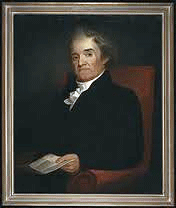 Dictionary Dude Noah Webster – Daniel’s cousin
Dictionary Dude Noah Webster – Daniel’s cousin
Hello, Brave Blog Buddies! Welcome to Acoustics 101 – Abridged, this version designed to enlighten within The Fast Lane. By virtue of our Blog Bond, today we are carpooling. With the cruise control set comfortably at 90 — and frequent side-/rear-view mirror checks — you’re invited to sit back and enjoy the ride! Re-lax. There is no test. [Audible sigh!]
xxxxxxxxxxxxxxxxxxxx
Again, with a deferential nod to our Noah Webster …
xxxxxxxxxxxxxxx
xxxxxxxxxxxxxxxxxxxxx GLOSSARY OF TERMS xxxxxx xx [Semi-alphabetized and simplified – for the less scenic route]
ACOUSTIC or ACOUSTICAL [adjective]: 1. Pertaining to the sense or organs of hearing, to sound, or to the science of sound. 2. A building material designed for controlling sound. ACOUSTICS [noun]: 1. The branch of physics that deals with sound and sound waves. 2. The qualities or characteristics of a room, auditorium, stadium, et al., which determine the audibility of sounds in it. ACOUSPEAK [self-invented noun]: A specific language as used by the acoustics industry. [Practical Application: Wall Covering Designs Inc. assesses the acoustics within a client’s venue and provides all acoustical products, technology, design and installation. In AcouSpeak, we absorb ambient sound through this time- and cost-efficient process.] xxxxxxxxxxxxxxxxxxxxxxxxxxxxxxxxxxx Blog Buddies on the Road Again
Blog Buddies on the Road Again
Okay. Full speed ahead! Making great time, chitchat and progress thru this yummy Snack Sack. And just when you thought it just couldn’t get any better …
ABSORPTION: A property of materials which allow reduction in the amount of sound reflected. AIRBORNE SOUND: Sound that reaches the point of interest by air transmission. AMBIENT or BACKGROUND NOISE: The total of all noise in an environment, excepting the source of interest. AUDIO FREQUENCY: The frequency, between 20 and 20,000 hertz, of oscillation in a sound wave. CONNIE NORLANDER: President of Wall Covering Designs Inc. FILTER: A device which separates signal elements based upon their frequencies. FREE FIELD or FREE SOUND FIELD: A sound field in which the effects of obstacles or boundaries on the sound transmitted within that field is minor. FREQUENCY: The number of times per second that sound waves cycle. HEARING LOSS: A term denoting auditory impairment. Measured in decibels, types include: conductive, sensorineural and noise-induced! [Hel-lo, Restaurants. Listen up! This can occur from repeated exposure to the din and the hubbub!] INTENSITY: The flow of sound through a specific area in a measured amount of time. LOUDNESS: Subjectively, the intensity of sound as heard by humans. It is dependent upon both frequency and sound pressure. xxx Eyes on the horizon — Hands at 10 and 2
Eyes on the horizon — Hands at 10 and 2
Okay. Halftime Pop Quiz! Just jokin’! Keep your eyes on the road!
MASKING: The process and amount by which the threshold of audible sound is raised by another sound. NOISE: 1. Unwanted sound. 2. Any sound not found within the natural environment, such as those from aircraft, traffic, construction and commercial/ residential sources. 3. An irregular oscillation.
OSCILLATION: Time variances, increasing and decreasing, of audible sound or vibrating solid object. PHON: A unit for measuring loudness levels. PITCH: Auditory sensations which scale sounds from low to high. Pitch is dependent upon source frequency, sound pressure and waveform. PRESBYCUSIS: A decline in hearing attributed to aging. REFLECTION: The return of a sound wave from a surface. REFRACTION: The bending of a sound wave from its original path. REVERBERATION: In an enclosed space, after a sound source stops emitting energy, some time passes for audibility of the sound. This coupled with multiple reflections is called reverberation. SHIELDING: Decrease in sound achieved by barrier placement. SOCIOCUSIS: Hearing loss caused by noise exposures within the social environment, including bombs, gunfire, concerts, fireworks, sports events, traffic and Restaurants – the din and the hubbub. SOUND: An auditory sensation evoked by oscillation. SOUND LEVEL: A sound-pressure level obtained by using a sound-level meter and frequency-weighting system. SOUND-PRESSURE LEVEL: Airborne sound fluctuations measured by decibels. THRESHOLD OF AUDIBILITY: The minimum sound-pressure level at which a person can hear. THRESHOLD OF PAIN: The minimum sound-pressure level which elevates discomfort to definite pain. VIBRATION: Oscillating movement of solid objects commonly caused by displacement. WALL COVERING DESIGNS INC.: Your one-stop shop for solving any/all acoustical concerns. xxxxxxxxxxxxxxxxxxxxxxxxxxxxxxxxxxxxxx
 Word construction ahead!
Word construction ahead!
You know I am not acronymanic, but the rest of flippin’ world is. My take? It ought to be psych certified and pharm recognized. Till that magical elixir hits the mainstream bloodstream, I do apologize for this delay caused by word construction. Let’s rubberneck!
xxxxxxxxxxxxxxxxxxx
xxxxxxxxxxxxxxx
GLOSSARY OF ACRONYMS
AI [Articulation Index]: A calculation of the intelligibility of transmitted or processed speech, it considers both the limitations of transmission path and background noise. AF [Audio Frequencies] CC[ Connie Cocktail]: A signature shaker drink enjoyed before dinner, its recipe is found within post entitled Just Who Are We? dB [Decibel]: Officially a degree of loudness, AcouSpeak refers to this value when expressing the relative intensity levels of sound. Scaled from zero to 130, the first describes average least-perceptible sound and the latter average pain. Hz [Hertz]: This symbol is a unit of frequency equal to one cycle per second. In quantifying sound-wave cycles as sensed by the human ear, an infant is able to perceive frequencies ranging from 20 to 20,000 Hz, whereas the average adult can hear sounds between 20 and 16,000 Hz. NRC [Noise Reduction Coefficient]: An NRC rating determined by lab testing, this represents a product’s ability to absorb sound. Zero being perfectly reflective and 1 perfectly absorptive, the widely-used standard is always expressed as a decimal. The acoustics industry relies on this measurement when reducing sound within a room. www.nrcratings.comOSHA [Occupational Safety & Health Administration] RT [Reverberation Time]: A measure of the amount of acoustical absorption present inside the room. STC [Sound Transmission Class]: This STC rating, also presented in decimal form, defines the ability of a material or an assembly to resist airborne sound transfer. Using a sound-insulating partition [common AcouSpeak], an STC determines its transmission-loss properties. www.stcratings.com STC [Sound Transmission Coefficient]: The average number of decibels reflected away from a partition by barrier material No. You’re not seeing double! Two STCs. Do you want one of us to take the wheel? WCD [WALL COVERING DESIGNS INC.]: Your one-stop shop for solving any/all acoustical dilemmas.
xxxx
Okay, Acoustics 101 – Abridged Aces! We made it all the way through Directory Drive — well ahead of ETA and no red lights or sirens! [Sshh!] So proud, Brainy Bloggers, of your admirable AcouSticktoitiveness. Not easy, I know. Here are Google Map printouts for input into your GPAs. You’ll want to remember the route, as other posts will surely be referring to these glossaries. All righty, then. We’ve arrived … all safe and sound.
“And …?” “Sound.” “Oh, I get it. ‘Sound’ as in …” “As in: Look it up. Have a great day. Look forward to chatting with you again soon. For now, ta-ta!”
{ 2 comments }


